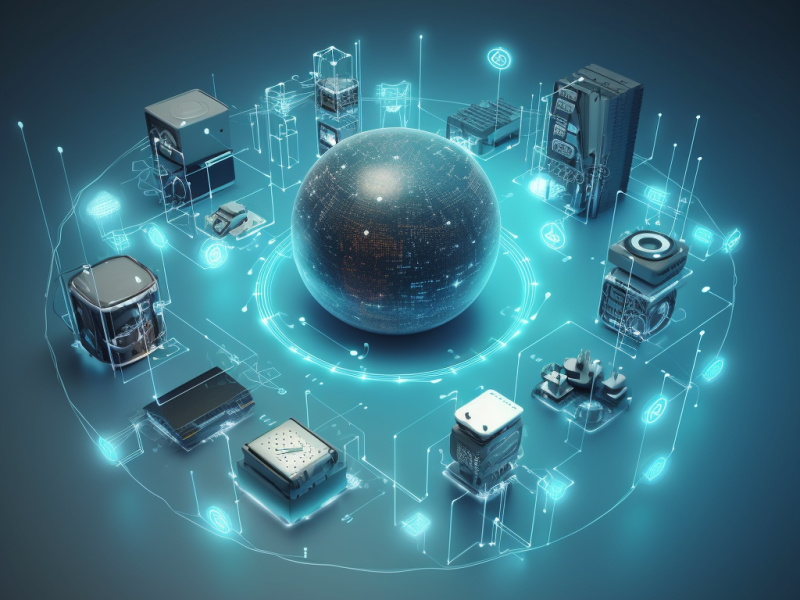The integration of the Internet of Things (IoT) is revolutionizing digital transformation across various sectors. This blog delves into the key aspects of IoT integration, including its components, benefits, challenges, and its specific applications in healthcare.
Overview of IoT in Digital Integration
The Internet of Things (IoT) refers to the network of physical objects embedded with sensors, software, and other technologies to connect and exchange data with other devices and systems over the internet. In digital integration, IoT serves as a pivotal technology that enables the seamless exchange of data across various digital platforms and systems, facilitating enhanced communication, automation, and data-driven decision-making.
Digital integration involves the convergence of multiple technologies and systems to create a cohesive digital ecosystem. IoT plays a critical role in this process by providing the infrastructure for devices to communicate and share data. This integration allows for the automation of processes, real-time monitoring, and the creation of intelligent systems that can adapt and respond to changes in the environment.
Key Components of IoT Systems
IoT systems comprise several key components:
- Sensors and Actuators: These devices collect data from the environment or perform actions based on received instructions. Sensors detect physical changes such as temperature, humidity, motion, and light, converting these changes into data. Actuators, on the other hand, act upon the data received, such as adjusting a thermostat or activating a switch.
- Connectivity: This involves communication protocols and networks that enable data exchange between devices. Connectivity can be achieved through various means, including Wi-Fi, Bluetooth, Zigbee, and cellular networks. The choice of connectivity depends on the application requirements, such as range, bandwidth, and power consumption.
- Data Processing: Once data is collected, it needs to be processed, often in real-time, to derive actionable insights. Data processing can occur at the edge (near the source of data), in the cloud, or through a combination of both (fog computing). Edge processing reduces latency and bandwidth usage, while cloud processing offers scalability and advanced analytics.
- User Interface: This allows users to interact with the IoT system, either to monitor data or control devices. User interfaces can be in the form of mobile apps, web dashboards, or voice-activated assistants. They provide users with a convenient way to access and manage IoT devices and data.
Benefits of IoT in Digital Transformation
IoT offers numerous benefits in digital transformation:
- Enhanced Efficiency: Automation of processes leads to reduced operational costs and improved efficiency. IoT enables the continuous monitoring and optimization of systems, reducing the need for manual intervention and minimizing downtime.
- Data-Driven Insights: Real-time data collection and analysis provide valuable insights for better decision-making. IoT systems generate vast amounts of data that can be analyzed to identify patterns, trends, and anomalies, informing strategic decisions and predictive maintenance.
- Improved Customer Experience: IoT enables personalized services and products, enhancing customer satisfaction. For example, smart home devices can learn user preferences and adjust settings accordingly, while connected cars can provide real-time navigation and entertainment options.
- Innovation: IoT fosters innovation by enabling new business models and services. Companies can leverage IoT to create value-added services, such as remote monitoring and predictive maintenance, or develop entirely new products that enhance the user experience.
Challenges and Risks in IoT Integration
While IoT offers significant benefits, it also presents challenges and risks:
- Security Concerns: IoT devices are susceptible to cyber-attacks, which can compromise data security and privacy. Ensuring robust security measures, such as encryption, authentication, and regular updates, is essential to protect IoT systems from threats.
- Interoperability Issues: Integrating various IoT devices and systems can be complex due to differing standards and protocols. Achieving seamless interoperability requires the adoption of open standards and protocols, as well as collaboration between manufacturers and stakeholders.
- Data Management: Handling the vast amounts of data generated by IoT devices requires robust data management and storage solutions. Effective data management involves data collection, storage, processing, and analysis, as well as ensuring data quality and integrity.
- Regulatory Compliance: Ensuring compliance with regulations related to data security and privacy is crucial. IoT systems must adhere to various regulatory frameworks, such as GDPR, HIPAA, and CCPA, which govern the collection, storage, and processing of personal data.
Case Studies and Applications in Healthcare
Healthcare is one of the sectors significantly impacted by IoT integration. Some applications include:
- Remote Patient Monitoring: IoT devices enable continuous monitoring of patients’ health parameters, facilitating timely interventions. Wearable devices, such as smartwatches and fitness trackers, can monitor vital signs, detect abnormalities, and alert healthcare providers in case of emergencies.
- Smart Medical Devices: Connected medical devices provide real-time data, improving diagnosis and treatment. Examples include smart insulin pumps, connected inhalers, and digital stethoscopes, which enhance the accuracy and effectiveness of medical interventions.
- Inventory Management: IoT helps in tracking medical supplies and equipment, ensuring their optimal use and availability. IoT-enabled inventory management systems can monitor stock levels, track expiration dates, and automate reordering processes, reducing waste and ensuring timely access to critical supplies.
- Telemedicine: IoT supports telemedicine by providing reliable connectivity and data exchange between patients and healthcare providers. Telemedicine platforms leverage IoT to enable remote consultations, remote diagnostics, and virtual care, improving access to healthcare services, especially in remote or underserved areas.
The integration of IoT in digital transformation is driving significant advancements across various sectors, particularly in healthcare. While it offers immense benefits, addressing the challenges and risks associated with IoT is crucial for its successful implementation. As technology continues to evolve, the role of IoT in digital integration will only become more prominent, paving the way for smarter, more connected systems that enhance efficiency, innovation, and quality of life. Contact us today to learn how IoT integration can revolutionize your digital transformation efforts and drive innovation across your organization.

